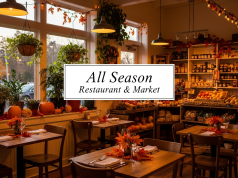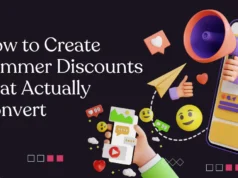Running successful seasonal promotions can make or break your e-commerce sales year. While some brands see massive revenue spikes during key shopping periods, others struggle to cut through the noise and connect with customers when it matters most.
The difference often comes down to strategy, timing, and execution. This comprehensive guide will walk you through everything you need to know about planning, launching, and optimizing seasonal promotions that drive real results for your e-commerce business.
Understanding the Seasonal Shopping Calendar
Major Shopping Seasons
The e-commerce calendar revolves around several key shopping periods, each with unique characteristics and customer behaviors.
Holiday Season (November-December) represents the biggest opportunity for most retailers. Black Friday, Cyber Monday, and the weeks leading up to Christmas generate enormous traffic and sales volume. Customers expect significant discounts and are actively comparison shopping.
Back-to-School (July-September) targets students, parents, and professionals preparing for the new academic year. This period works well for electronics, clothing, stationery, and home organization products.
Spring Cleaning (March-May) capitalizes on the desire for fresh starts and home improvement. Home goods, cleaning supplies, organizational tools, and health products perform particularly well.
Summer Sales (June-August) focus on vacation, outdoor activities, and seasonal lifestyle changes. Travel accessories, summer clothing, outdoor gear, and fitness products see increased demand.
Secondary Seasonal Opportunities
Beyond major seasons, smaller promotional windows can deliver strong results with less competition.
Valentine’s Day, Mother’s Day, and Father’s Day create gift-giving opportunities. Earth Day appeals to environmentally conscious consumers. Tax season drives purchases of business supplies and organizational tools.
The key is matching your product catalog to relevant seasonal moments rather than forcing promotions that don’t align with customer needs.
Planning Your Seasonal Strategy
Research and Analysis
Start by analyzing your historical sales data to identify patterns and opportunities. Look at which products sold well during specific seasons, when customer acquisition peaked, and which promotional tactics drove the best results.
Study your competitors’ seasonal approaches, but don’t copy them directly. Instead, identify gaps you can fill or ways to differentiate your offerings.
Monitor industry trends and emerging seasonal opportunities. Social media, Google Trends, and industry publications can reveal shifting customer behaviors and new promotional possibilities.
Setting Clear Objectives
Define specific goals for each seasonal campaign. Are you trying to increase overall revenue, clear excess inventory, acquire new customers, or boost average order value?
Different objectives require different promotional strategies. Customer acquisition campaigns might emphasize deep discounts and broad reach, while inventory clearance focuses on specific product categories.
Set measurable targets for key metrics like conversion rate, average order value, customer acquisition cost, and return on ad spend. These benchmarks help you evaluate success and optimize future campaigns.
Budget Allocation
Seasonal promotions often require increased spending on advertising, inventory, and operational support. Plan your budget allocation across all necessary areas.
Consider the full customer lifecycle when budgeting. Acquiring customers during peak seasons can drive long-term value even if immediate margins are lower.
Account for increased customer service needs, shipping costs, and potential technology upgrades required to handle traffic spikes.
Creating Compelling Seasonal Offers
Discount Strategies
The right discount structure depends on your profit margins, customer expectations, and competitive landscape.
Percentage discounts work well for higher-priced items and create clear value perception. Dollar amount discounts can drive higher conversion rates on lower-priced products.
Tiered discounts encourage larger order sizes. For example, “15% off orders over $75, 20% off orders over $150.”
Buy-one-get-one offers and bundle deals increase average order value while moving multiple products.
Limited-Time Urgency
Scarcity and urgency drive immediate action, but use these tactics authentically to maintain customer trust.
Flash sales create genuine urgency when properly executed. Limit quantities or set specific end times to encourage quick decisions.
Early bird discounts reward your most engaged customers while building anticipation for larger promotions.
Countdown timers and inventory counters work when they reflect real constraints rather than artificial pressure.
Gift and Value-Added Promotions
Free shipping removes a common purchase barrier and often increases conversion rates more than equivalent percentage discounts.
Free gifts with purchase create additional value without directly impacting your main product margins.
Extended warranties, free installation, or premium customer service can differentiate your offers from competitors focused solely on price.
Timing Your Promotions
Early vs. Late Season Timing
Starting promotions early captures customers before competitors and allows for longer campaign optimization periods. However, early promotions may convert customers who would have purchased at full price later.
Late-season promotions can clear inventory and capture last-minute shoppers, but face more competition and potentially smaller audience sizes.
Consider your customer base and product type when choosing timing. Fashion items might benefit from early season launches, while gift items perform well closer to relevant holidays.
Promotional Calendar Coordination
Map out your entire seasonal promotional calendar to avoid conflicts and ensure adequate preparation time.
Space promotions to avoid customer fatigue while maintaining regular engagement. Too many sales can train customers to wait for discounts.
Coordinate with industry events, competitor activities, and your own product launches or inventory cycles.
Pre-Launch and Post-Season Activities
Build anticipation with teaser campaigns, email previews, and social media hints about upcoming promotions.
Post-season follow-up campaigns can extend seasonal momentum and transition customers to your regular product offerings.
Use post-season surveys and feedback collection to improve future seasonal strategies.
Marketing Your Seasonal Campaigns
Email Marketing

Email remains one of the highest-converting channels for seasonal promotions when executed strategically.
Segment your email list based on purchase history, engagement levels, and demographic data to deliver relevant seasonal offers.
Create seasonal email sequences that build anticipation, announce launches, provide social proof, and create urgency.
Optimize subject lines, send times, and content for seasonal themes while maintaining your brand voice.
Social Media Promotion
Social media platforms offer unique opportunities for seasonal engagement and promotion.
Create seasonal content that entertains and informs while subtly promoting your offers. Behind-the-scenes content, seasonal tips, and user-generated content perform well.
Use platform-specific features like Instagram Stories, Facebook Live, and TikTok trends to reach different audience segments.
Coordinate organic content with paid social advertising for maximum reach and engagement.
Paid Advertising
Seasonal periods often see increased advertising costs due to higher competition. Plan accordingly and optimize for efficiency.
Update ad creative to reflect seasonal themes, but ensure your branding remains consistent and recognizable.
Adjust targeting parameters to reach seasonal shoppers while maintaining focus on your ideal customer profiles.
Test different ad formats, placements, and audiences to find the most cost-effective promotional approaches.
Optimizing Your Website for Seasonal Traffic
User Experience Improvements
Seasonal promotions often drive traffic spikes that can overwhelm unprepared websites. Ensure your site can handle increased load without performance degradation.
Create dedicated seasonal landing pages that clearly communicate your offers and guide visitors toward conversion.
Simplify navigation and checkout processes to reduce friction during high-traffic periods.
Mobile Optimization
Mobile shopping continues to grow, especially during seasonal periods when customers shop on the go.
Ensure your seasonal promotions display correctly on mobile devices and that checkout processes work smoothly on smaller screens.
Consider mobile-specific promotional formats like SMS campaigns or app-exclusive offers.
Conversion Rate Optimization
Test different promotional presentations, button colors, and page layouts to maximize conversion rates.
Use heat mapping and user behavior analysis to identify and fix potential conversion barriers.
Implement exit-intent popups, abandoned cart recovery, and other retention tactics to capture additional sales.
Measuring and Analyzing Results
Key Performance Indicators
Track metrics that align with your seasonal campaign objectives. Revenue and conversion rate are important, but don’t tell the complete story.
Monitor customer acquisition cost, lifetime value, and retention rates to understand the long-term impact of seasonal promotions.
Analyze traffic sources, geographic performance, and device usage to identify optimization opportunities.
Post-Campaign Analysis
Conduct thorough post-mortems after each seasonal campaign to identify successes and improvement areas.
Compare results against industry benchmarks and your own historical performance.
Document lessons learned and specific tactics that worked well for future reference.
Continuous Improvement
Use seasonal campaign data to refine your overall e-commerce strategy and customer understanding.
Test different promotional approaches each season to avoid stagnation and discover new opportunities.
Share insights across your team to improve coordination and execution of future campaigns.
Building Long-Term Success Through Seasonal Marketing
Seasonal promotions should contribute to your long-term business growth rather than just short-term sales spikes. Focus on acquiring high-quality customers who will continue purchasing beyond promotional periods.
Develop seasonal content and campaigns that reinforce your brand values and differentiate you from competitors relying solely on discounting.
Build an email list and customer database during seasonal campaigns to support year-round marketing efforts.
Consider how seasonal promotions fit into your overall customer journey and lifetime value optimization.
Successful seasonal promotions require careful planning, strategic execution, and continuous optimization. By understanding your customers’ seasonal needs, creating compelling offers, and delivering exceptional experiences, you can turn seasonal shopping periods into significant growth opportunities for your e-commerce business.
Start planning your next seasonal campaign early, test different approaches, and always keep your customers’ needs at the center of your promotional strategy.
Learn more: Why Seasonal Products Matter for Business Success









